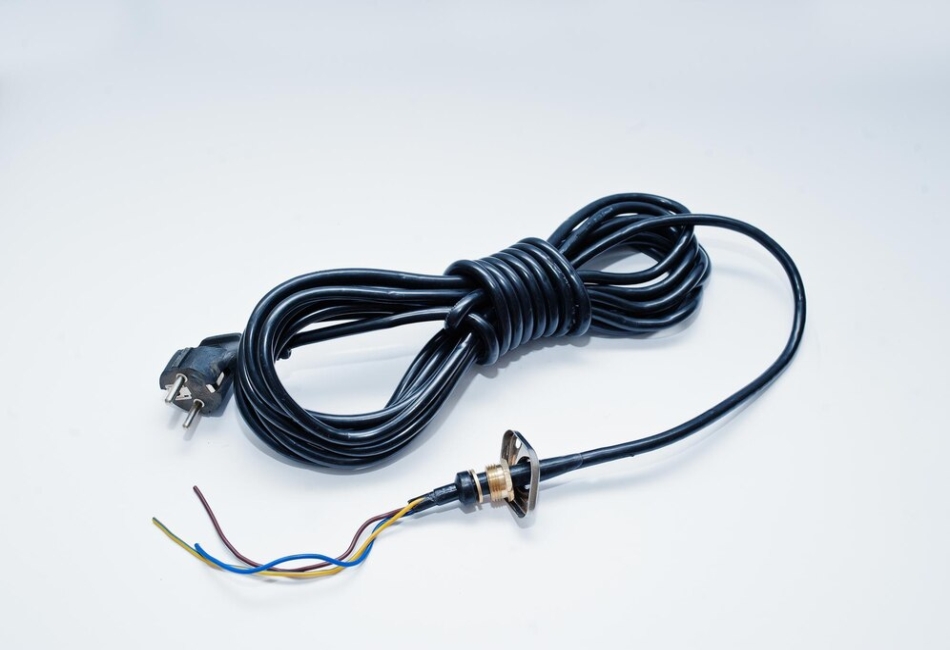Are you frustrated with torn power cords that barely reach your outlet?
If yes, you are on the right page.
Selecting the proper power cord goes beyond compatibility and safety features. Furthermore, with range of options regarding length and durability, it is easy to get overpowered.
Nevertheless, careful selection of the right power cord ensures smooth and safe operation of devices.
To get the best fit, you must consider the wattage, the gauge of the cord, and the environment. With the right selection of cords, electronics and home appliances perform better while reducing potential hazards.
Want to learn more?
Read the entire article to understand the critical factors you must consider when buying a power cord.
1. Connector Type and Compatibility
The very first considerations when selecting a power cord are connector type and compatibility.
Remember that the connector must correspond with your device’s power input. Some widely used connector types are NEMA 5-15P, NEMA 1-15P, and IEC 320/C13 or C19. These connectors are made for household equipment, computers, and even industrial devices.
Without alignment of the connectors, the cord will not fit, which can cause frustration or damage to your device. So, always confirm the specifications before making a purchase and thoroughly review your device’s specifications.
2. Length and Gauge
Next, consider the length and diameter of the power cord.
Too long of a cord presents the possibility of safety issues, while a cord that is too short will not provide sufficient maneuverability.
Furthermore, the gauge of the cord also has to be considered. A thicker gauge is needed for longer cords to protect against overheating and voltage drop.
Consistent power delivery, particularly in robust applications, is aided by a thick gauge. Hence, one needs to ensure operational efficiency and safety standards are met by selecting the appropriate length and gauge.
3. Safety Certifications
Also, do not forget the safety certifications relevant to the power cords.
Check for UL, CSA, and RoHS certifications, which show the cord is safe, of good quality, and considers the environment.
With a certified power cord, you can be sure it passes electrical safety tests and will not cause electrical fires, shocks, or other dangers. These certifications should be required, as not having them poses undue risks.
The cost of a certified cord is reasonable compared to the risk associated with an uncertified one.
4. Environmental and Usage Conditions
When choosing a power cord, consider the environmental conditions in which it will be used.
If you work in industrial or outdoor typesetting, you’ll need a power cord that is tougher, and can withstand harsher conditions, like SJTW or SJTOW water (SJTW) and oil (SJTOW) resistant cords.
Such cords are built to endure moisture, extreme temperatures, and even physical wear and tear.
In medical setups, ensure you’re using the correct medical-grade cords for sensitive applications while meeting stringent industry standards.
By considering your working conditions, you will prolong the lifespan and safety of the power cord.
5. Specialized Applications
Picking out cords for medical or industrial purposes requires attention to detail, so purchase one tailored for the intended use.
Cords used for medical devices, for example, need to be hospital-grade cords because of extra meticulous requirements that need to be satisfied within the domain of safety and dependability.
Other specialized uses may call for cords with unique characteristics, such as EMI – electromagnetic interference – shielding for protection of vulnerable equipment.
Ensuring that specialized requirements and industry standards are met, in this case, safety, performance, and survivability, dictates the choice of specialized cords. Do not overlook tailored requirements of your equipment in advance in order to prevent the purchase of wires that do not fulfill all needs.
6. Voltage and Amperage Ratings
Pay attention to the rating related to volt and amperes for the power cord. It is imperative to consider the electrical load your apparatus needs and ensure the cord can manage such a load. Every piece of equipment draws power within certain limits; if the supply range exceeds that, damage like overheating, destruction of property, or fire danger is possible.
The voltage rating sets a limit on the voltage level the cord can carry without danger, while the amperage rating checks whether the cord can stand the load current without failure.
Verify these values against your device specification in order to avoid any electrical complications.
7. Customization Needs
Last but not least, do not forget about customization options for power cords if these relate to your unique setup.
Several vendors provide the option of customizing cords according to specific needs and adding features such as a different connector or length.
This is particularly beneficial for businesses and individuals who require more advanced features that off-the-shelf products do not offer. Tailoring these specifications provides proven assurance of optimal performance, reliability, and peace of mind.
Always proactively look for tailored options to further augment your efficiency, trust these solutions to meet your performance standards and ensure there is no risk of compromising your goals.
Conclusion
Selecting a power cord isn’t simply a matter of convenience; it’s a careful consideration of safety, efficiency, and reliability.
Taking into account connector type, voltage ratings, length, and gauge helps you avoid damaging your devices and reduces safety risks. Additionally, ensure to look at certificates and peripheral condition checks to guarantee the cord functions as needed in the setting it aims to be used in.
Moreover, for very specific requirements, tailored cords address the nuance of the need. With attention to detail, you will make the right decision while ensuring your devices are operational throughout their lifecycle.
